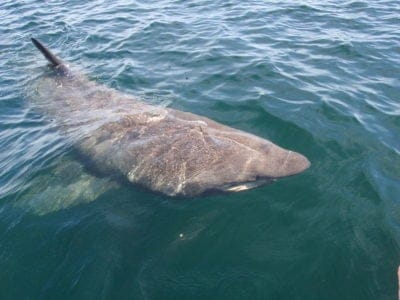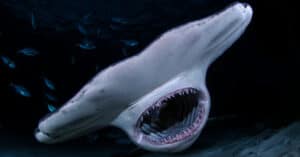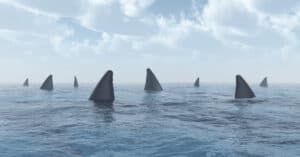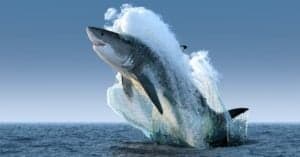Types of Sharks: 25 Shark Species You Must Know!
How many types of sharks are there in the world? In the article below we’ll examine into the types of sharks (hint: there are 8 main groups and each has significant differences). From there we’ll dive into 25 of the most unique shark species on Earth that show just how different (and interesting) sharks can be. Let’s dive in!
How Many Species of Sharks Are There?
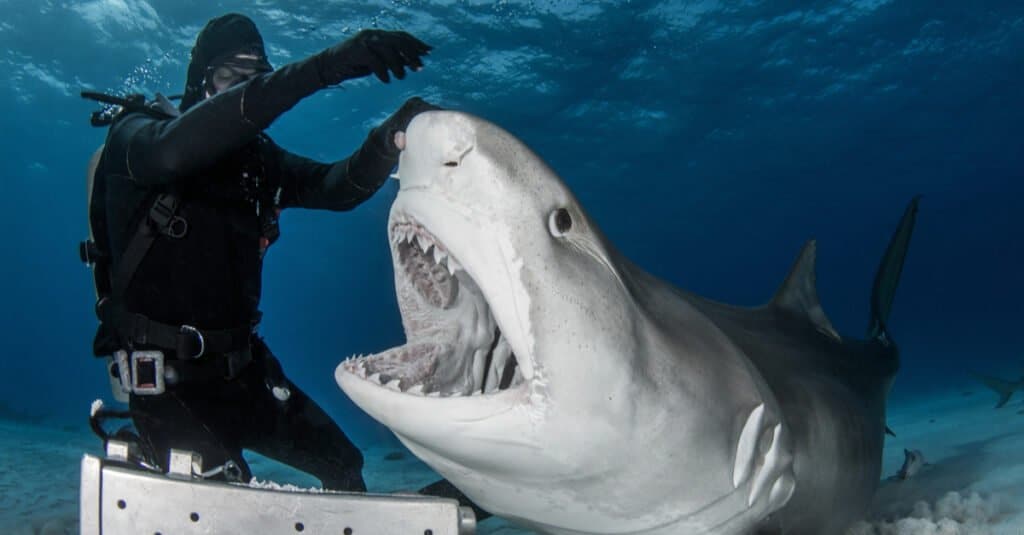
Tomas Kotouc/Shutterstock.com
As of late 2021, there are 512 species of sharks, but that number is almost certain to grow. Why is that? Well, there are 23 species of sharks that are waiting on scientific description to be considered “valid.” That brings the likely total of discovered sharks to 535!
Here’s something mind-blowing, if you picked up a book about sharks published in the year 2000, it would list 405 species of sharks. That’s because 107 new shark species have been added since the turn of the century. It’s likely that in the years ahead entirely new sharks will continue being discovered!
Why are we still discovering shark species?
With sharks generally being very large, you might wonder how we’re still discovering so many sharks. After all, there was a 35-year gap that elapsed between the discovery of the last two carnivorous mammals!
There are a couple of reasons sharks keep getting discovered:
- This might sound simplistic, but sharks live in water and are just less commonly bumped into. One species of shark, the pondicherry was called the “lost shark” because it hadn’t been seen since the 1970s. However, one was quickly discovered by a TV crew looking for the species at a fish market.
- Many sharks are deep sea sharks: That is to say, they lived hundreds or even thousands of feet below the surface. Humans only make contact with these species on rare travels that deep or when they wash up on shore.
Now that we know how many shark species exist, let’s dig into what types of sharks exist.
Different Types of Sharks:
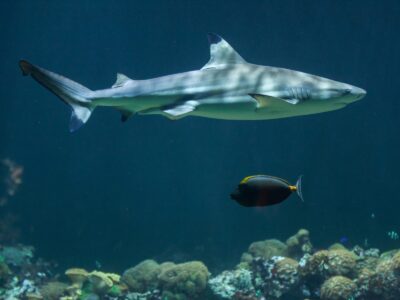
Blacktip Reef Shark
They move in and out of mangrove swamps with the tides.
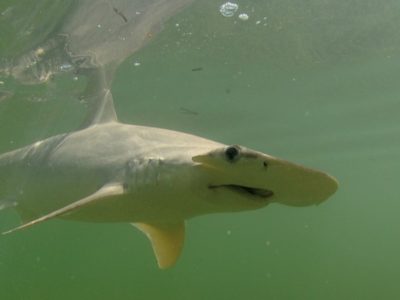
Bonnethead Shark
Bonnetheads are the only hammerhead sharks that use their pectoral fins to swim.
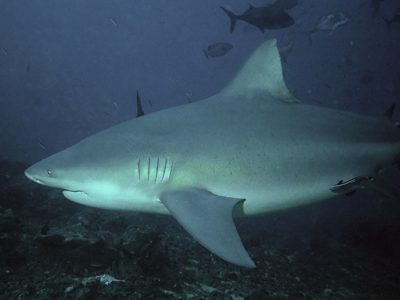
Bull Shark
Unpredictable and aggressive temperament!
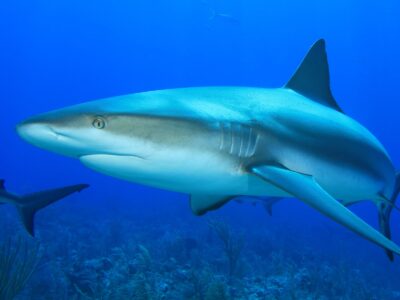
Caribbean Reef Shark
These sharks are a big part of ecotoursim in the Caribbean.

Cookiecutter Shark
The cookiecutter shark takes its name because it leaves a cookie-shaped bite hole in its prey.

Frilled Shark
Frilled Sharks got their name from the six rows of gills on their throat that look like ruffled collars.
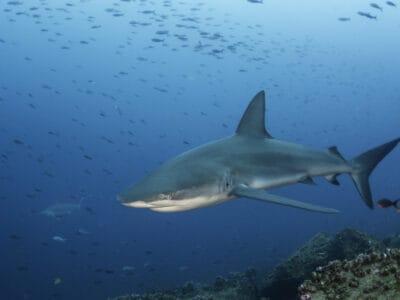
Galapagos Shark
Galapagos sharks are cannibalistic and sometimes eat their young, so the pups stay away from the adults in shallow water.

Goblin Shark
Goblin Sharks are called a living fossil because their family, Mitsukurinidae, can be traced back 125 million years.
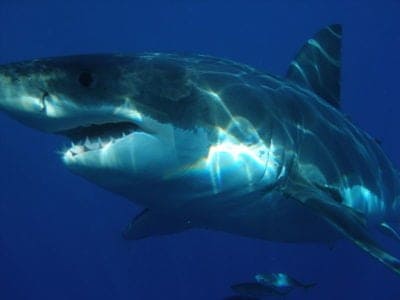
Great White Shark
Can grow to more than 8 meters long!

Greenland Shark
This shark has the longest lifespan of any vertebrate.

Grey Reef Shark
One of the most common shark species!

Hammerhead Shark
Found in coastal waters around the world!

Horn Shark
Endemic to the Californian coast!

Leopard Shark
Leopard Sharks have teeth with three points.

Megalodon
The largest shark to ever live!
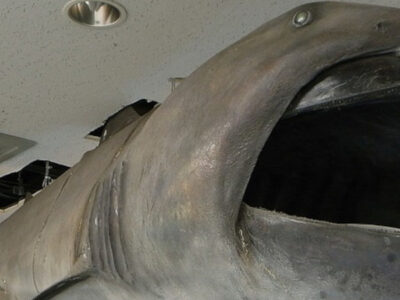
Megamouth Shark
Swims with its mouth open to capture prey

Nurse Shark
Commonly found in Central American waters!

Porbeagle Shark
The porbeagle is one of the few sharks that jumps out of the water

Pygmy Shark
Pygmy sharks underbelly glows to attract prey that swims beneath it.
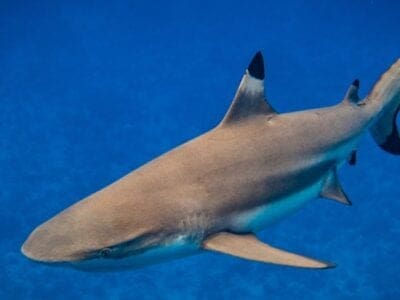
Reef Shark
Grey reef sharks can give birth without males

Salmon Shark
Salmon sharks are related to Great Whites.
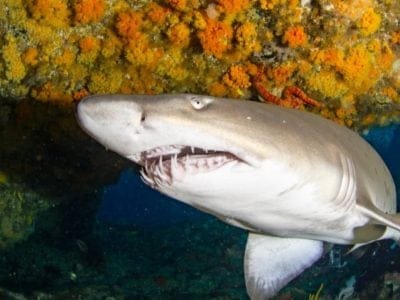
Sand Tiger Shark
The sand tiger is the shark most commonly seen in aquariums.
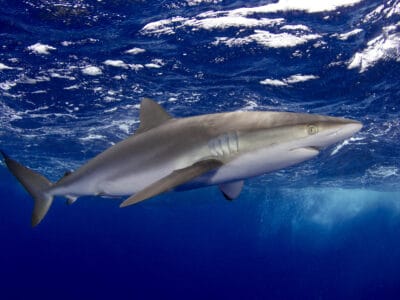
Silky Shark
Has an extremely acute sense of hearing
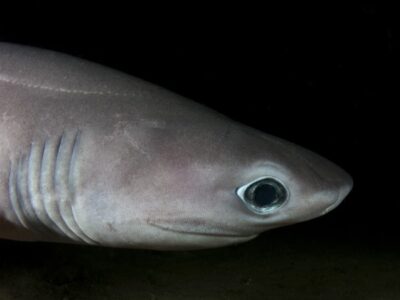
Sixgill shark
The sixgill shark has six pairs of gills instead of the normal five

Sleeper Shark
The Greenland shark is one of the longest living vertebrates in the world.

Spinner Shark
Can have up to 20 babies
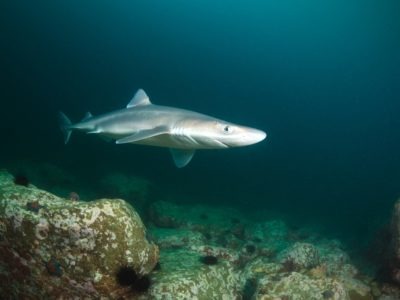
Spiny Dogfish
Found in ocean waters worldwide!

Tiger Shark
The fourth biggest species of shark in the world!

Viper shark (dogfish)
Most data on these fish is based on observations near Japan.
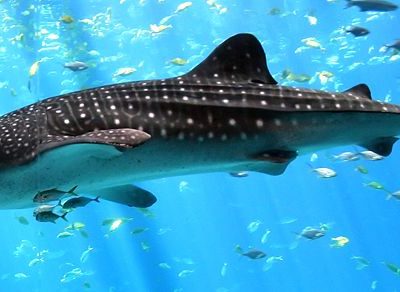
Whale Shark
The largest species of fish in the world!
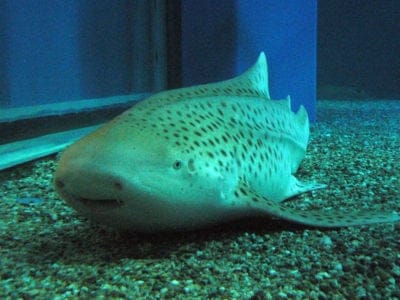
Zebra Shark
Can get to be 30 years old in the wild!
What are the 8 Groups of Sharks (Orders)?

By Javontaevious – Took a photographPreviously published: Javontae [email protected] Facebook, CC BY-SA 3.0, https://en.wikipedia.org/w/index.php?curid=37516033 – License
Before we dive into 25 of the most unique shark species in the world, let’s examine the 8 different group of sharks. There are 8 orders that comprise all known sharks. Learn all 8 of these and you’ll be familiar with how scientists group different types of sharks!
1.Dogfish sharks
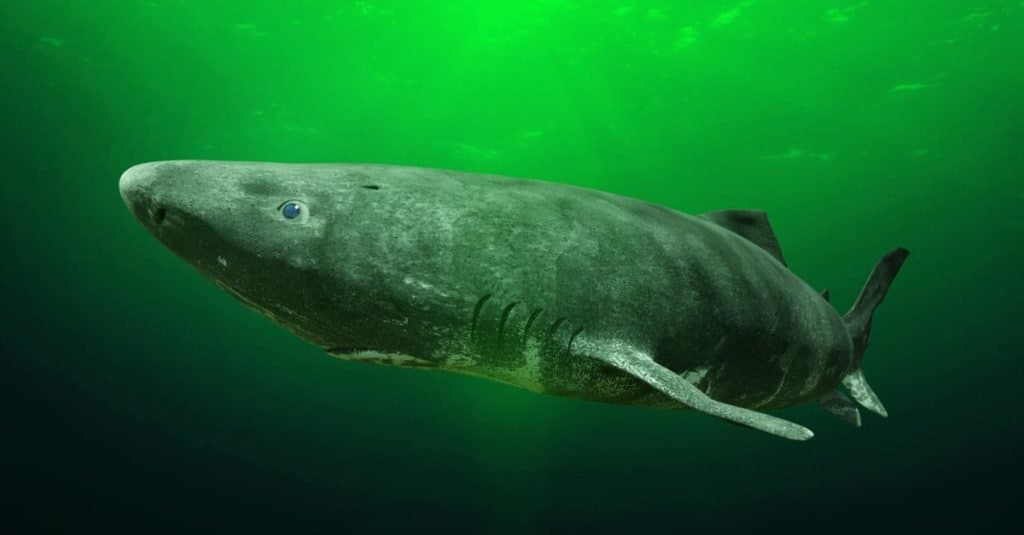
Dotted Yeti/Shutterstock.com
Include gulper, kite-fin, dogfish, lanternsharks, and sleeper sharks. Some notable species in the dogfish order include:
- Greenland sharks: Which can live up to 500 years.
- Cookiecutter sharks: Takes small bites out of their prey leaving unique scarring.
- Ninja lanternshark: A shark that glows in the dark.
In total there are 131 types of dogfish shark, making it one of the most diverse orders of sharks. In fact, 24% of all shark species belong to this order! It is likely more dogfish sharks will continue being discovered as well. Most lanternsharks live deep in the ocean. For example, the ninja lanternshark was just discovered in 2015!
2. Cow and frilled sharks
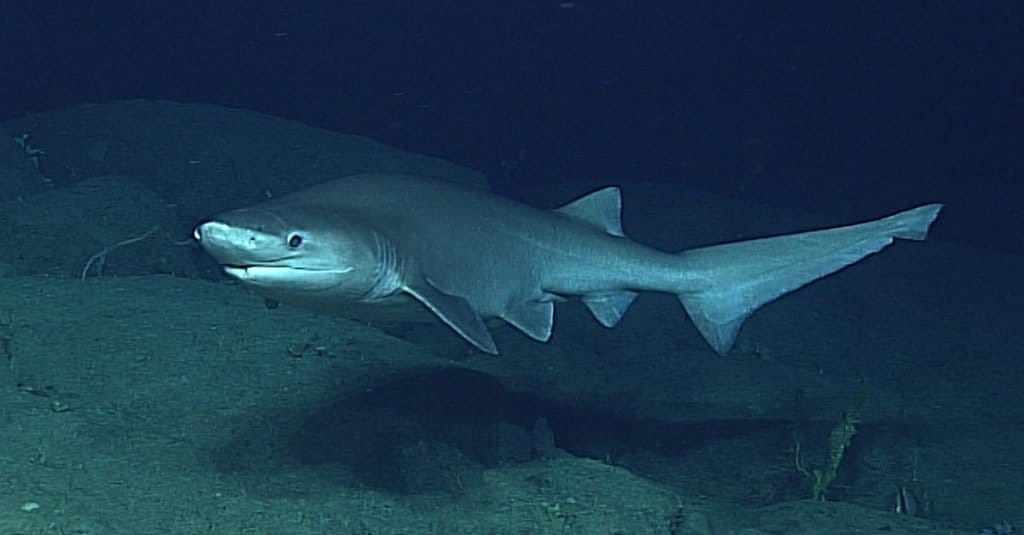
NOAA Ocean Explorer from USA – License
There are only seven species of cow and frilled sharks, making this the smallest order containing just 1% of total shark species. Cow and filled sharks include:
- Frilled shark: A “living fossil” with very primitive features.
- South African frilled shark: A newly discovered species that was just described in 2009.
- Bluntnose sixgill shark: Commonly known as the “cow shark.” One of the largest shark species, capable of growing to 20 feet in length!
3. Sawsharks
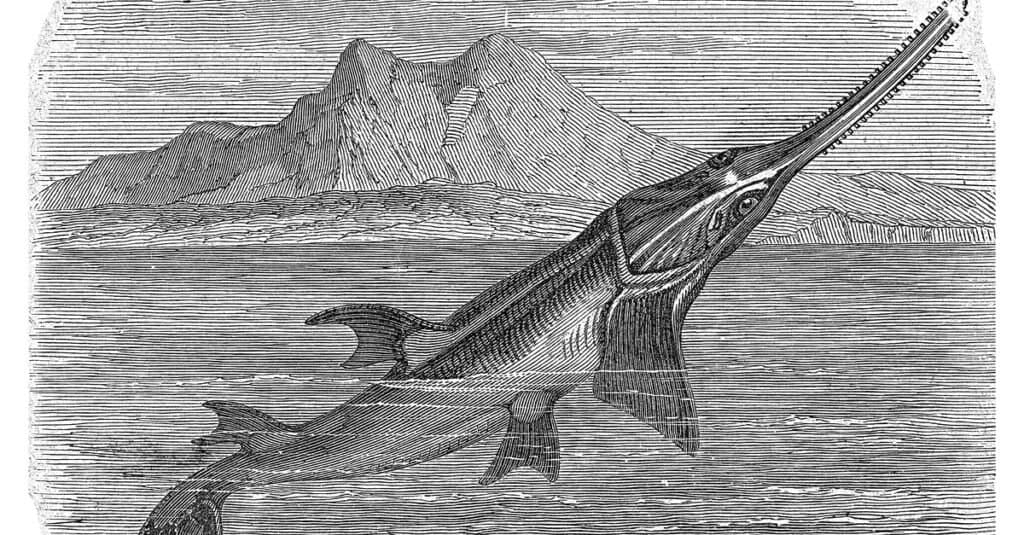
Morphart Creation/Shutterstock.com
Only slightly larger than cow and frilled sharks with a total of 8 species, sawsharks have snouts that look like… Well, saws! Sawsharks are different than sawfish. One notable difference is that few sawshark species don’t exceed more than 5 feet in length while the largest sawfish species can grow to 23 feet long!
Sawshark species include:
- Bahamas sawshark: A sawshark that lives in deeper waters that other species, reaching 1,000 meters below the ocean surface.
- Longnose sawshark: Its saw-like snout is 30% of its total body length!
4. Angel Sharks
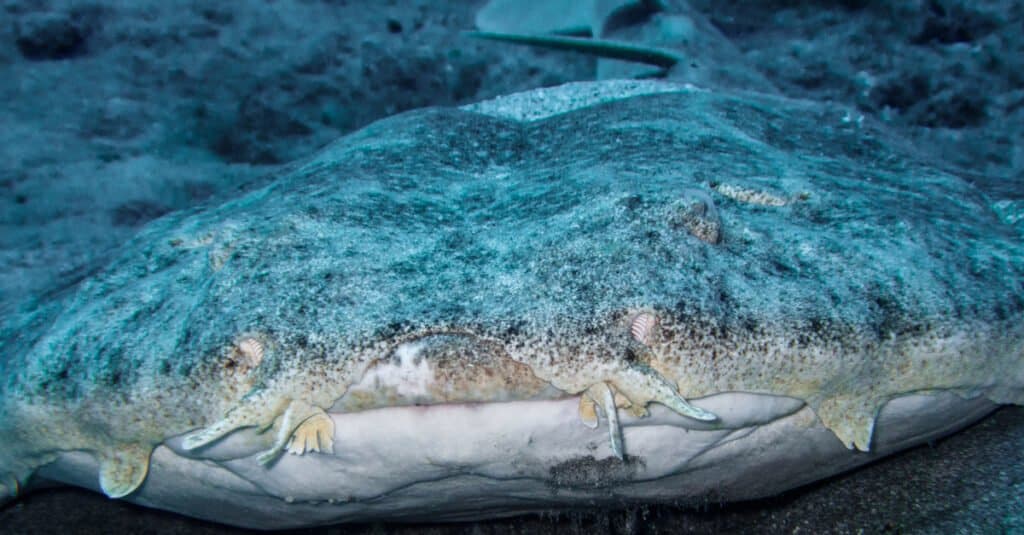
LuisMiguelEstevez/Shutterstock.com
There are 22 species of angel sharks that occupy a single family and genus. Unfortunately, angel sharks are among the most endangered sharks in the world. They live along the bottom of the ocean close to coastlines, which means they’re often caught as a byproduct by fishing nets.
Some notable types of angel sharks:
- Angelshark: The first angel shark species described by scientists is simply known as ‘angel shark.” Unfortunately, this species is also now listed as critically endangered.
- Phillipines angelshark: Only a single specimen has been caught; was declared a new species in 2011.
5. Bullhead Sharks

Philip Garner/Shutterstock.com
Another smaller order of sharks with just 10 species (9 described). Bullhead sharks are very distinctive and can trace their lineage back to the Jurassic Era when gigantic dinosaur sauropods like Brontosaurus ruled the land! Bullhead shark species include:
- Horn shark: Common along the Pacfific Coast from California to South America. Horn sharks use suction to feed on a diet that mostly mullosks and crustaceans.
- Zebra bullhead shark: One of two sharks to start with a “Z.” If anyone ever asks you to name a shark that starts with “Z,” you’re now prepared!
6. Mackerel Sharks

Jsegalexplore/Shutterstock.com
The type of shark that includes Jaws himself! Mackerel sharks include great whites, thresher sharks, and sand sharks. Interestingly, while this order contains hunters like great whites, it also includes basking sharks which are filter-feeding giants that don’t hunt prey. In addition, this type of shark has some very odd-looking additions like the goblin shark.
Some mackerel sharks you need to know are:
- Great white shark: The largest predatory shark in the world, the great white is an apex predator in oceans across the world
- Shortfin mako: The world’s fastest shark! Recent tests showed the shark could burst up to 46 miles per hour.
- Goblin sharks: Some of the most unique looking sharks in the world (check out a picture later in this article!). The goblin shark is rarely sighted and has a long snout that looks like a sword!
- Salmon sharks: Can use their body as a heater to thrive in extremely cold waters.
7. Carpet Sharks
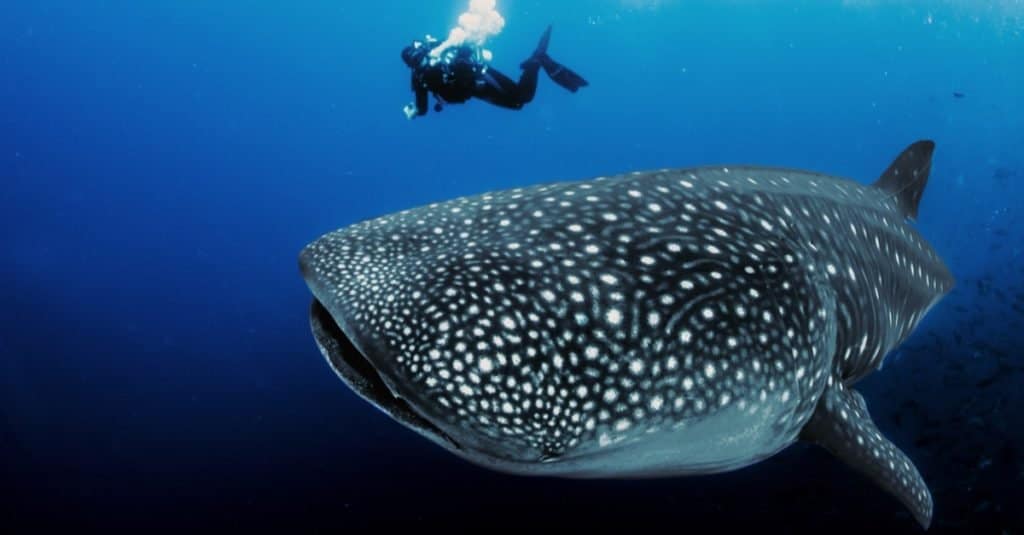
Lindsey Lu/Shutterstock.com
There are 45 different carpet sharks, and they range dramatically in size. This type of shark includes the whale shark, which is the largest fish in the world. Most carpet sharks are smaller and include nurse sharks, bamboo sharks, and wobbegongs.
Carpet sharks include:
- Whale shark: The largest shark species in the world and capable of reaching more than 60 feet in length!
- Epaulette shark: A species capable of walking on land when it gets stranded in tidal pools.
- Ornate wobbegong: Lives in Austrlian waters and has some of the most distinctive camoflage among shark species.
8. Ground Sharks
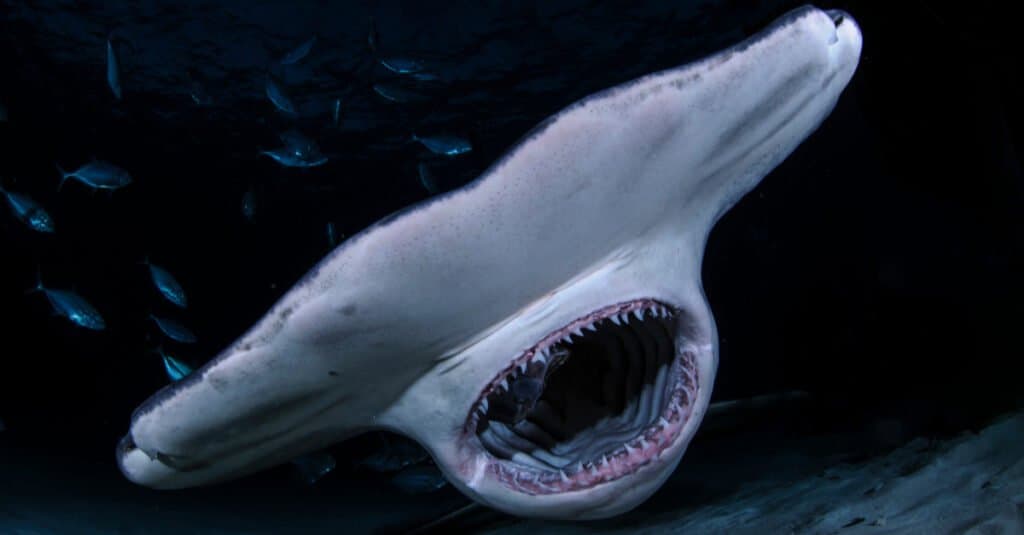
Martin Voeller/Shutterstock.com
The largest order of sharks with 296 species, ground sharks cover a tremendous diversity of species. In fact, 55% of all shark spies are ground sharks! For example, there are more than 140 species of catsharks (yes there are cat and dog sharks!) spread across this type of shark. Ground sharks also include hammerhead species, tiger sharks, and reef sharks.
- Tiger sharks: The second largest predator shark behind the great white, tiger sharks are voracious hunters that are known to eat just about any prey they can find!
- Atlantic ghost catshark: The third smallest shark species in the world, Atlantic ghost catsharks measure less than 10 inches in length.
- Bull sharks: A notoriously aggressive species of sharks that can live in both freshwater and saltwater.
25 Shark Species You Must Know!
Now that know the 8 types of sharks and which sharks belong in each, let’s dive into 25 of the most fascinating species of sharks. Each one has something incredibly unique, so you won’t want to miss reading about each one!
Great White Shark

Stefan Pircher/Shutterstock.com
- Type of Shark: Mackerel
- Wild Great White Shark Fact: The largest great white shark in the world is named Deep Blue and weighs about 5,000 pounds!
What other shark receives so much fascination as the great white? Great white sharks are the most aggressive sharks in the world, with 333 attacks on humans since tracking began in 1958. Yet, it’s important to remember that cows kill 20 people annually while great whites have killed four Americans in the past decade. The great white shark is an apex predator of the seas, rivaled only by the likes of killer whales.
Great Hammerhead
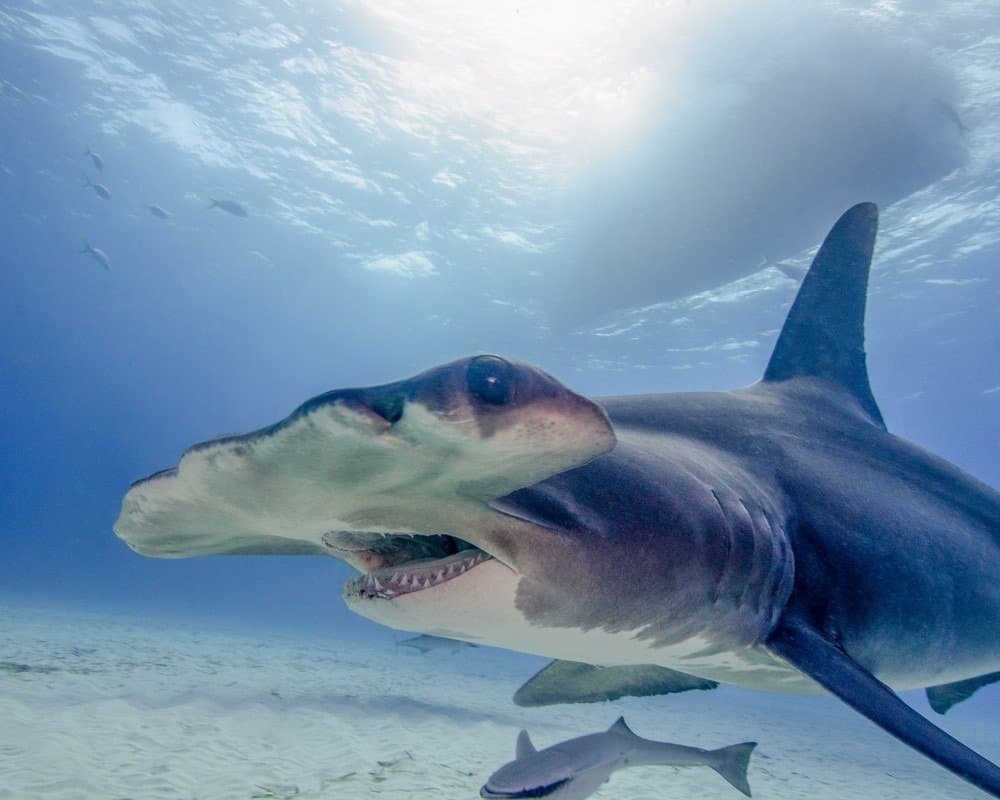
Brent Barnes/Shutterstock.com
- Type of Shark: Ground shark
- Wild Great Hammerhead Shark Fact: Great hammerheads spend 90% of their time swimming sideways!
There are 9 hammerhead sharks in the genus Sphyrna, but the great hammerhead is the largest. The unique shape of hammerheads is called a ‘cephalofoil,’ and it gives them 360-degree vision and superior depth perception. It can also be used as a weapon. Hammerheads will use their heads as a hammering ram to pin stingrays – among their favorite foods to eat – into the ground.
Tiger Sharks
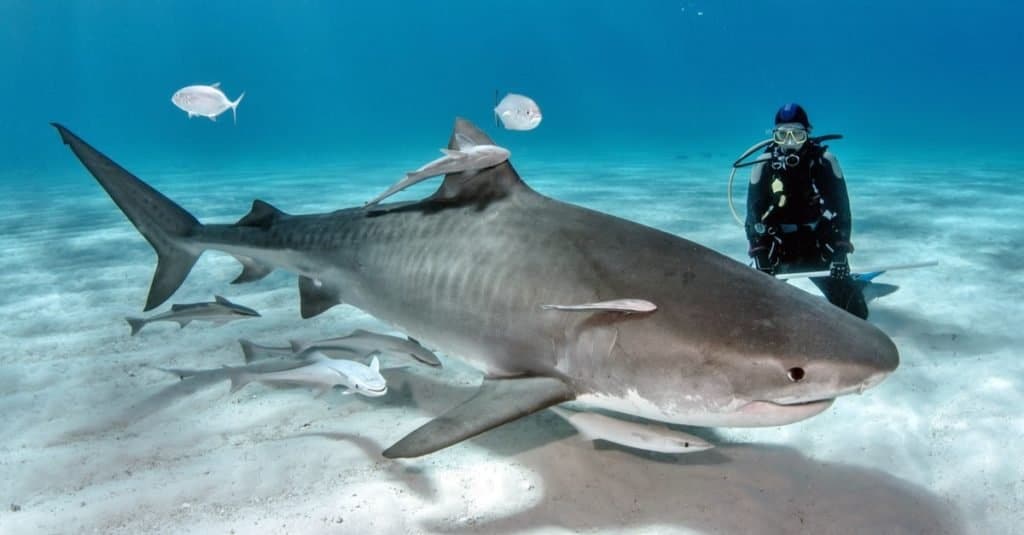
Tomas Kotouc/Shutterstock.com
- Type of Shark: Ground shark
- Wild Tiger Shark Fact: Tiger sharks are very food motivated. Scientists tracking shark movement noticed while all other sharks fled a hurricane in 2017, tiger sharks moved into the hurricane hoping for easy meals!
If it weren’t for great whites, tiger sharks would likely fill in for ‘Jaws.‘ The species is quite large with the biggest tiger sharks weighing up to 1,700 pounds. In addition, they’re the second most aggressive sharks after the great white. Tiger sharks eat just about anything. Analysis of their stomachs has found humpback whales, dolphins, sea turtles, and even antelopes.
Spinner Shark

- Type of Shark: Ground shark
- Wild Spinner Shark Fact: Spinner sharks can rotate up to three times after jumping out of the water. They’re the gynmnists of the shark world!
Spinner sharks are most notable for their jumping behavior. The spinner shark hunts by spinning around rapidly. While spinning, it blasts through groups of fish and snap their jaws in all directions. After blasting through groups of fishes it hits the surface of the air, where it performs a series of spins that would make even world-class gymnasts green with envy!
Bluntnose Sixgill Shark

NOAA Ocean Explorer from USA – License
- Type of Shark: Cow and frilled sharks
- Wild Bluntnose Shark Fact: Can reach up to 20 feet long, about the same length as a great white shark!
Sixgill sharks are among the most prehistoric sharks in the world. Scientists trace their lineage back more than 200 million years! Bluntnose sixgill sharks are often called “cow sharks” because of their sluggish movements and large size. However, they can be quite quick and aggressive when threatened. For example, when the documentary Planet Earth 2 found a group of bluntnose sixgills feeding on a whale carcass, the group of sharks attacked the filming submarine believing it was competition for the whale feast.
Megamouth Shark

Opencage / Creative Commons – License
- Type of Shark: Mackerel sharks
- Wild Megamouth Shark Fact: Megamouth sharks are massive – and distinctive looking – but the first one was seen in 1976. Its almost beyond belief that a creature this size could still be unknown, but many deep water animals remain unknown to human kind.
Megamouth sharks are deep-sea sharks that are rarely spotted. They’re 13 feet long and possess something you might not associate with sharks: glowing pores around their mouths! Scientists believe these pores attract krill and other small organisms that megamouth sharks eat through filter feeding. Amazingly, this unique shark belongs to the same type of shark as great whites!
Porbeagle Shark

- Type of Shark: Mackerel sharks
- Wild Porbeagle Shark Fact: Porbeagle sharks can turn their bodies into heaters!
Porbeagle sharks live in the frigid waters of the North Atlantic and the Antarctic. As you can imagine, water this cold requires unique adaptations from a shark. In the case of the porbeagle, they can heat their bodies to 14 to 18 degrees Fahrenheit above the surrounding water!
Bonnethead Shark

IrinaK/Shutterstock.com
- Type of Shark: Ground sharks
- Wild Bonnethead Shark Fact: Bonnethead sharks were the first-ever shark scientists comfirmed as omnivores!
In 2018 scientific research found that 60% of the bonnethead shark’s diet was seagrass. That makes the bonnethead shark the first (known) omnivorous shark that eats a diet equal in plants and meats. Bonnethead sharks are also the smallest species of hammerheads.
Greenland Shark
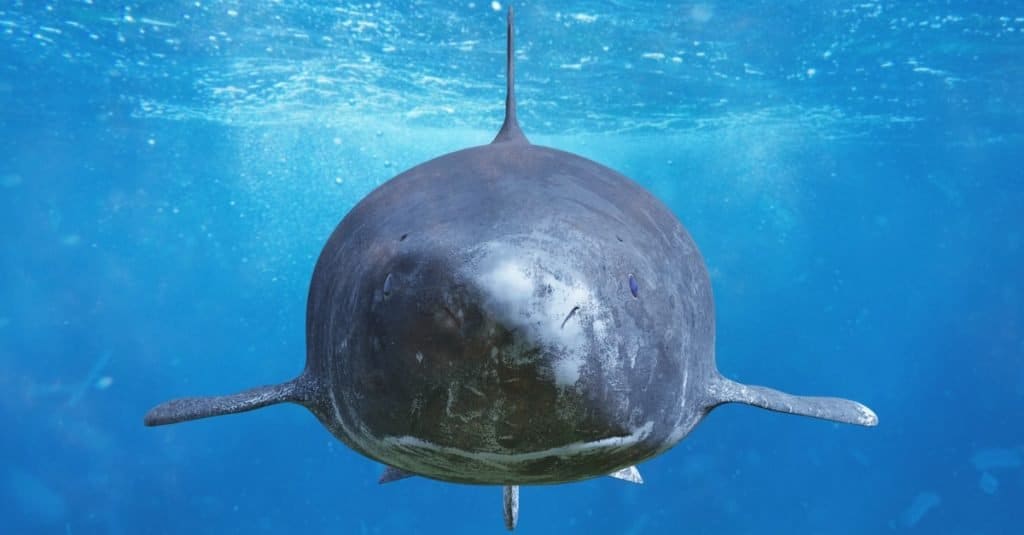
Dotted Yeti/Shutterstock.com
- Type of shark: Dogfish shark
- Wild Greenland Shark Fact: Greenland sharks are the oldest living vertebrates on Earth! They can potentially live up to 500 years!
Greenland sharks belong to a family known as ‘sleeper sharks‘ that are known for having low activity and being extremely slow. Not very exciting, right? Well, Greenland sharks are also notable for getting very big. They can reach 24 feet in length, a size greater than the longest great white shark. Also, Greenland sharks might live more than 500 years! Scientists studying Greenland sharks found that one shark was between 272 and 512 years old. Greenland shark meat is also toxic but is eaten in Iceland. To eat it, the shark meat must be buried in the ground for long periods. Finally, Greenland sharks eat just about anything. Even moose have been found in their stomachs.
So there you have it, sleeper sharks like the Greenland shark might sound boring, but that is one interesting shark!
Blue Shark
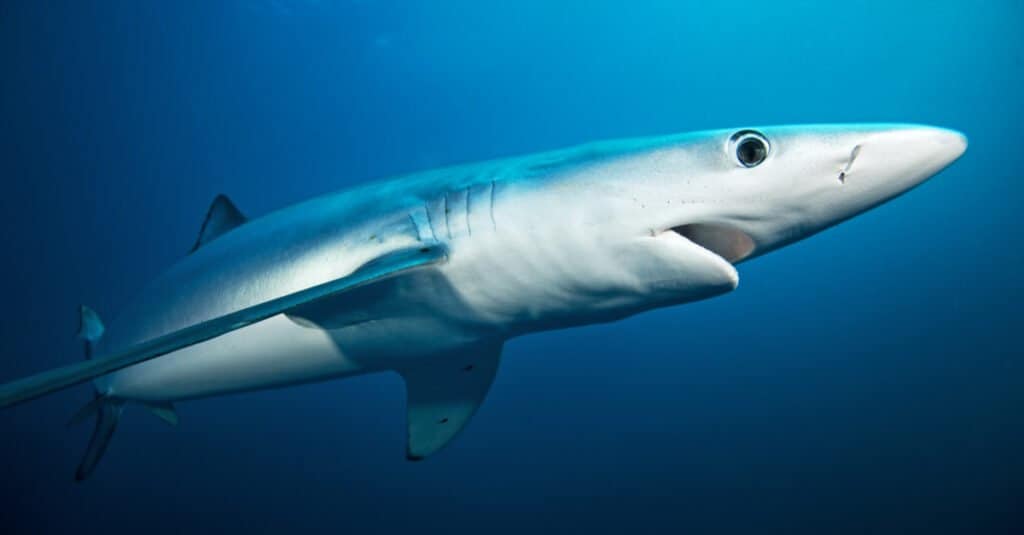
Martin Prochazkacz/Shutterstock.com
- Type of Shark: Ground shark
- Wild Blue Shark Fact: Female blue shark skin is twice as thick as males so they have survive bites during mating.
Requiem sharks are a large family of sharks that are effective hunters. This family includes tiger sharks, reef sharks, bull sharks, and yes, the blue shark. Requiem sharks are notable for giving live birth and being migratory. Blue sharks reach up to 10 feet in length and have a torpedo-like body that helps them reach impressive bursts of speed.
Horn Shark
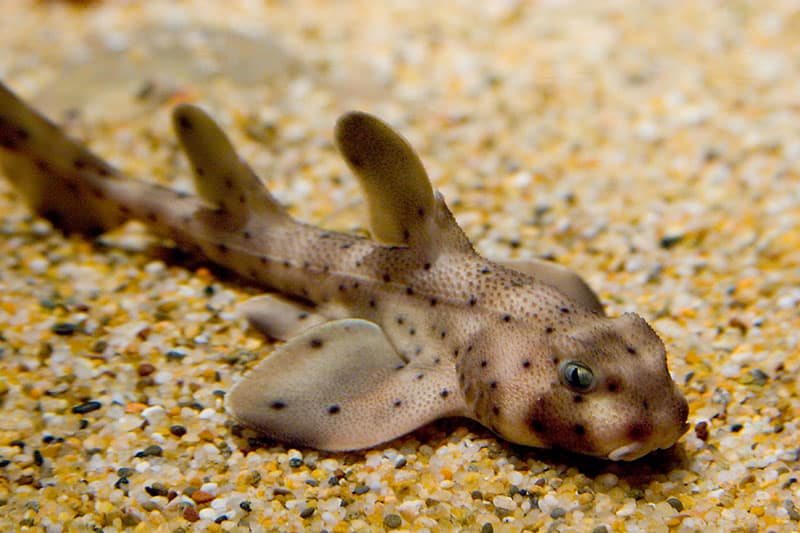
- Typoe of Shark: Bullhead shark
- Wild Horn Shark Fact: Horn sharks can pop out their jaws to use as a chisel on molusks attached to surfaces!
Horn sharks are one of the few species inside the bullhead shark order. The species can protrude its jaw 15% the length of its head in 1/50th of a second, this action allows it to carve off prey that’s attached to surfaces. This adaptation has served horn sharks well, as they can trace their lineage to the Jurassic Period when dinosaurs dominated the planet. This makes bullhead sharks some of the most prehistoric sharks still alive today.
Nurse Shark
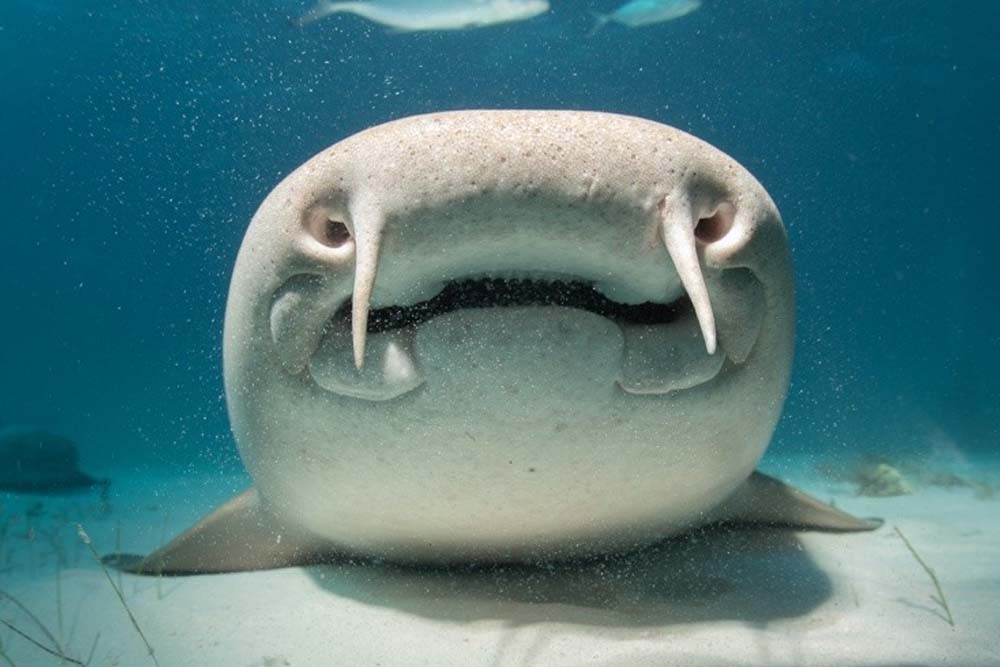
Maui Topical Images/Shutterstock.com
- Type of Shark: Carpet sharks
- Wild Nurse Shark Fact: Nurse sharks are the vacuum cleaners of the sea
Nurse sharks lay along the ocean floor near beaches. They’re mostly harmless to humans but can get quite big (more than 10 feet in length)! Nurse sharks eat in an interesting way, they have “barbels” on their faces that are similar to catfish that are used to smell for food. They then swim – or even walk by using their fins – along the ocean floor and “vacuum” up prey into their mouths. The species has a special cavity in their mouths that allows for incredible suction. Once prey enters their mouth their teeth are specialized to crush up shells of mollusks and crustaceans. As we said, they’re the vacuum cleaners of the sea!
Basking Shark
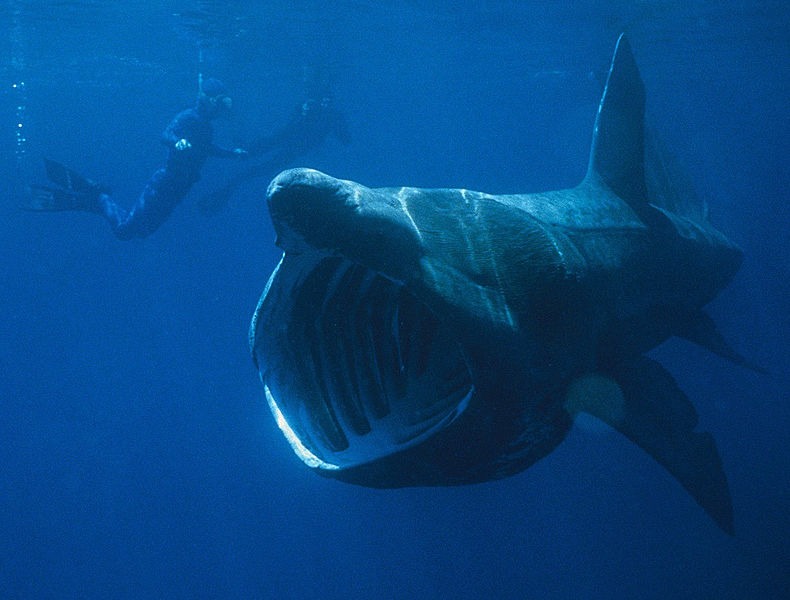
Chris Gotschalk / Public Domain
- Types of Shark: Mackeral sharks
- Wild Basking Shark Fact: They can reach up to 32,000 pounds in weight!
Basking sharks are gigantic, the second largest species of shark (we’ll get to number one shortly). While their average length is closer to 26 feet when fully grown, the largest ever basking shark reached 40 feet long and had an estimated weight of 32,000 pounds. That’s one big fish! If you see a picture of a basking shark and think they look scarier than they are in reality (they’re harmless to humans and filter feeders), the basking shark is a mackerel shark and closely related to great whites, which helps explain their appearance.
Cookiecutter Shark

- Type of Shark: Dogfish shark
- Wild Cookiecutter Shark Fact: They’re parasitic sharks that carve out cookie dough shaped bites from animals they prey on. Yeah, this is one weird shark species!
We’re about to get into some downright weird shark species, so it’s fitting we start with the cookiecutter shark. Never heard of them before? Cookiecutter sharks spend their days up to two miles deep in the ocean and migrate to the surface at night. They’re small, measuring less than two feet in length.
Now, here’s where they get so weird. Cookiecutter sharks look for prey and use suction to attach to them. Once they’ve attached themselves, they bite in with teeth that measure two to three inches in length and pop out a chunk of meat that looks like a scoop of cookie dough! Their teeth are powerful as well, cookiecutter sharks have forced nuclear submarines back to base after they disabled cables and sonar domes with their bites!
There are plenty of other weird aspects of this shark from their appearance to the fact they glow for hours after they die. Yet, it’s their cookie dough-shaped bite that stands out the most!
Goblin Shark

Mitsukurina owstoni
Japan (specimen / digitally manipulated)
David Shen / SeaPics.com
- Type of Shark: Mackerel sharks
- Wild Goblin Shark Fact: Their jaws shoot out of their mouth like the creature in Alien
With a name like goblin sharks, you know we’re sticking with a weird species. First of all, just look at goblin sharks, they have a sword-like object sticking out of their heads. Goblin sharks look so unique because they’re the only surviving species of an ancient type of shark. Goblin sharks are very large with a recent female catch having reached close to 20 feet in length.
Little is known about the species as they live in the deep ocean, but their jaws are one of their most incredible adaptations. Essentially, its jaws rapidly extend forward like a catapult, extending out from its body 2X to 10X further than other shark species. Even you’re trying to visualize what this looks like, think about the creature from Alien.
Bull Shark

Katja Tsvetkova/Shutterstock.com
- Type of Shark: Ground shark
- Wild Bull Shark Fact: Bullsharks can swim upstream across rapids – like salmon – to be able to reach freshwater lakes!
Bull sharks are aggressive sharks that will go literally anywhere for food. Such as:
- Bull sharks commonly live in a lake in Nicaragua that they have to jump up rapids (like salmon fighting a river to spawn) to get to.
- They’ve been seen 2,500 miles up upriver looking for food!
- In 2010, after the city of Brisbane was flooded they were spotted through city streets.
Bull sharks have an adaptation that allows them to live in both freshwater and saltwater, and as you can see from the examples above; they take advantage of it! They’re also extremely aggressive sharks and have even been spotted squaring off against hippos!
Whale Shark
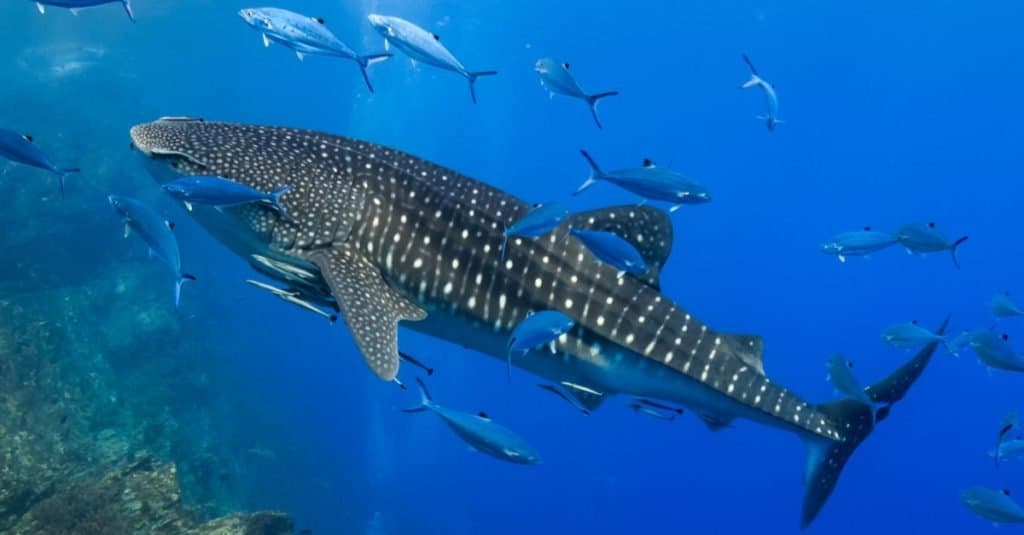
Richard Whitcombe/Shutterstock.com
- Type of Shark: Carpet shark
- Wild Whale Shark Fact: Whale sharks are big, you probably know that. But here’s just how big they are, their eggs are twice the size of ostrich eggs!
The largest-ever whale shark measured 62 feet long, it was the size of a bowling alley! Because they’re so enormous, whale sharks also take a long time to reach sexual maturity. Males area about 25 years old before they’re able to reproduce, and may live to 130 years of age! Despite their massive size, whale sharks are harmless to humans. They filter feed and have more than 3,000 teeth that crush up krill, eggs, and larvae.
Frilled Shark
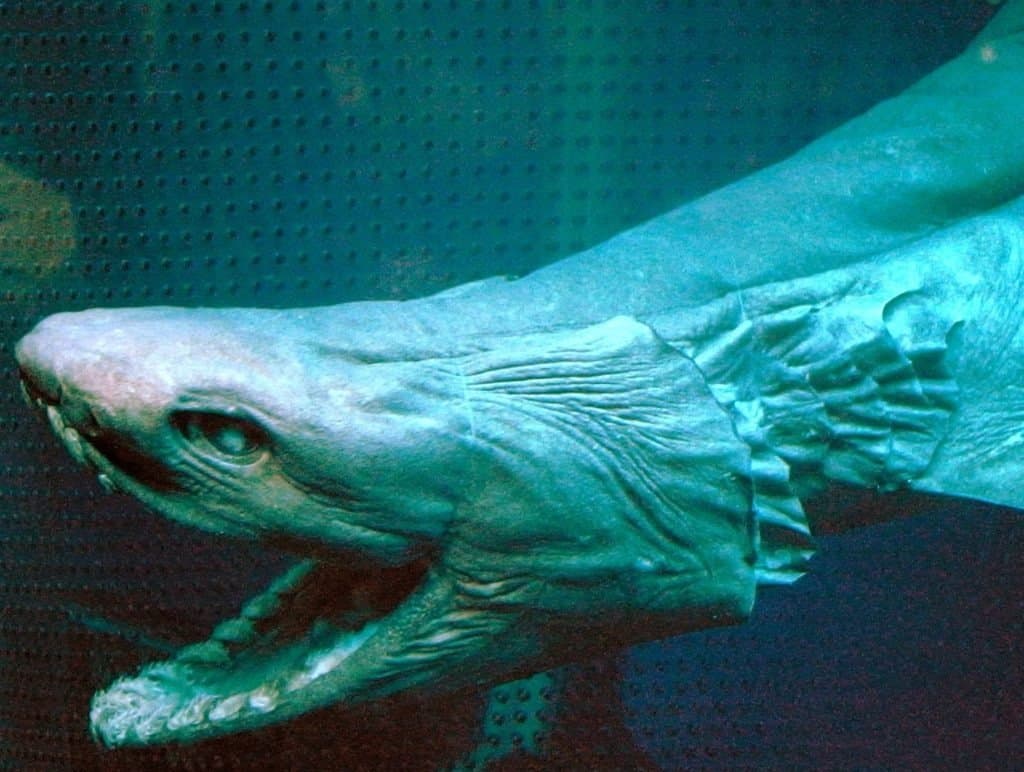
- Type of Shark: Cow and frilled sharks
- Wild Frill Shark Fact: Here’s how rare frilled sharks are, the first video of one wasn’t recorded until 2004!
Frilled sharks are another “living fossil” species of sharks that looks more like an eel than most modern sharks. Like cookiecutter sharks, they migrate to the ocean surface to hunt at night and spend their days deep below the ocean’s surface. One interesting fact about the frilled shark is that their gestation period may be up to 3.5 years long, or more than four times the length of a human!
Sand Tiger Shark
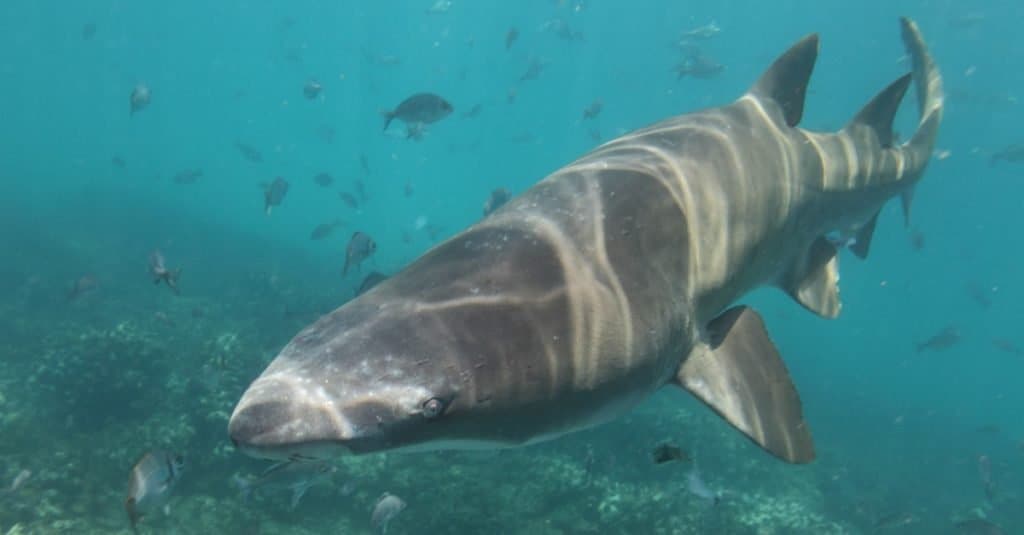
Alessandro De Maddalena/Shutterstock.com
- Type of Shark: Mackerel sharks
- Wild Sand Tiger Shark Fact: Can gulp air from the surface which allows them to “ambush” prey in environments like shipwrecks!
Here’s what’s interesting about sand tiger sharks, they can hunt unlike other sharks. For most species of sharks, they need to move to breath. That is to say, if they stop swimming they perish! Sand tiger sharks have an adaptation that allows them to gulp air at the surface, which allows them to lay motionless. This makes sand tiger sharks especially effective hunters in habitats like shipwrecks since they can lay motionless in wait and leap at prey when they pass by!
Thresher Sharks
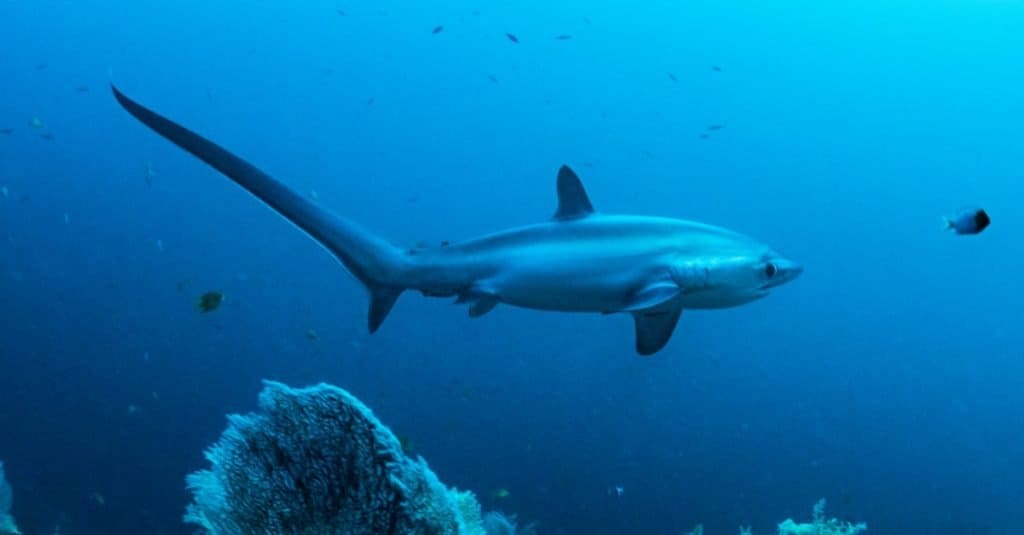
- Type of Shark: Mackerel sharks
- Wild Thresher Shark Fact: A tail as long as their body that they use to whip prey!
Thresher sharks have one defining feature: a tail that’s the same size as their body! They use this tail to “whip” at prey, shocking them and providing an easy meal. It was recently discovered that thresher sharks migrate to spots where millions of fish congregate off reefs. With huge “bait balls” of fish, the thresher shark’s whip is especially effective!
Shortfin Mako Shark
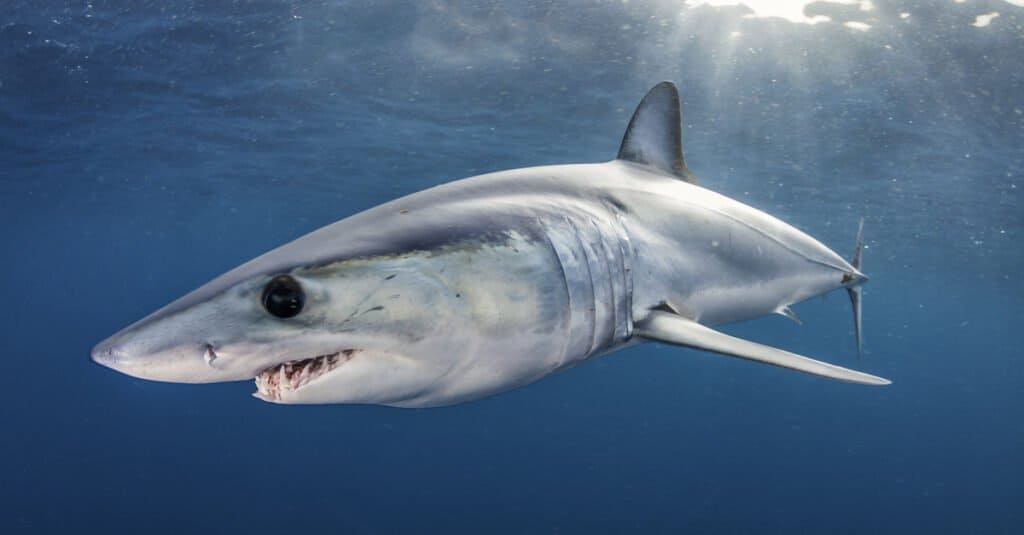
wildestanimal/Shutterstock.com
- Type of Shark: Mackerel sharks
- Wild Shortfin Mako Shark Fact: Their bullet-shaped body allow them to travel up to 46 miles per hour
Shortfin makos are built for one thing: speed! The sharks aren’t small, they can reach more than 14 feet in length and the largest shortfin mako ever recorded weighed 1,300 pounds! Shortfin makos have been recorded hitting speeds of up to 46 miles-per-hour, which makes them the fastest shark species in the world. In addition to being built for speed, they’re also an extremely intelligent species with a large brain-to-body ratio.
Epaulette Shark
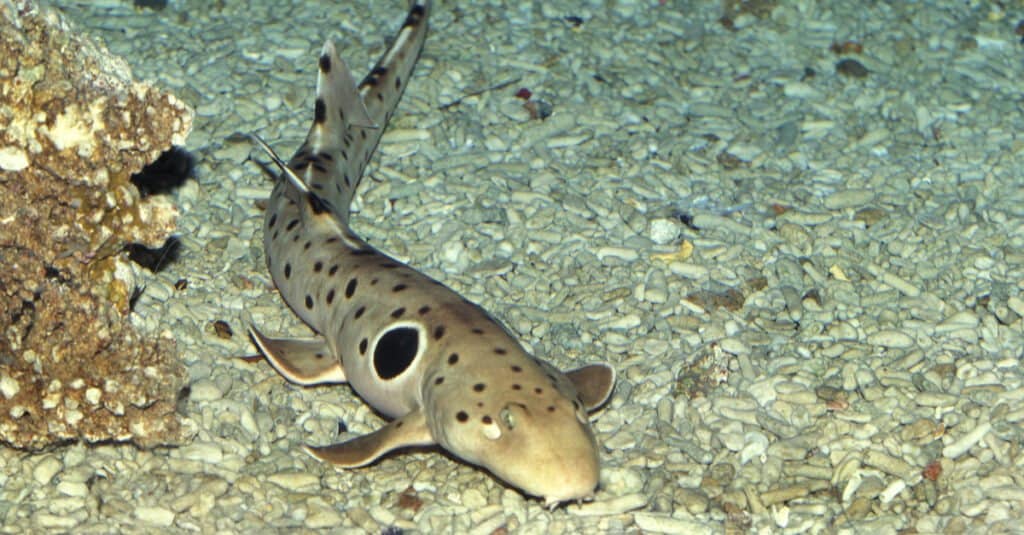
slowmotiongli/Shutterstock.com
- Type of Shark: Carpet sharks
- Wild Epaulette Shark Fact: They can walk on land!
The most crazy thing about epaulette sharks is pretty simple, they can walk on land! The species isn’t especially large, reaching a bit less than four feet in length at maturity. Epaulette sharks prefer hunting near land in tidal pools, which leads to them often being stranded. To avoid death when the tide moves out too quickly epaulettes have developed a unique adaptation that allows them to slow their breath and heart rate and survive for up to an hour while they walk back to the water! Yes, this truly is a shark that can walk (briefly) on land.
Types of Sharks that Have Gone Extinct
Sharks first evolved around 450 million years ago and have survived several mass extinctions that brought down other dominant types of animals.
(Interesting fact, about 19 million years ago sharks almost went the way of the dinosaurs. 90% of them rapidly died off and scientists aren’t exactly sure why!)
No look at the types of sharks in the world would be complete without an examination into types of sharks that have gone extinct. Let’s take a look at three species you want to get the full details on!
Megalodon

Gil Cohiba/Shutterstock.com
- Type of Shark: Ancestor to mackerel sharks
- Wild Megalodon Shark Fact: Its bite force was estimated to be five times more powerful than a Tyrannosaurus Rex!
Let’s face it, no list looking at types of sharks would be complete with megalodon! The shark was big, with some estimates of its size reaching between 20 times to 50 times the size of the largest great white in the world today when measured by weight! The absence of megalodon is likely the reason that whale species today – like the blue whale – have evolved to become so large. Simply put, megalodon was the apex predator of the oceans for around 20 million years and its absence still hasn’t been replaced!
Stethacanthus
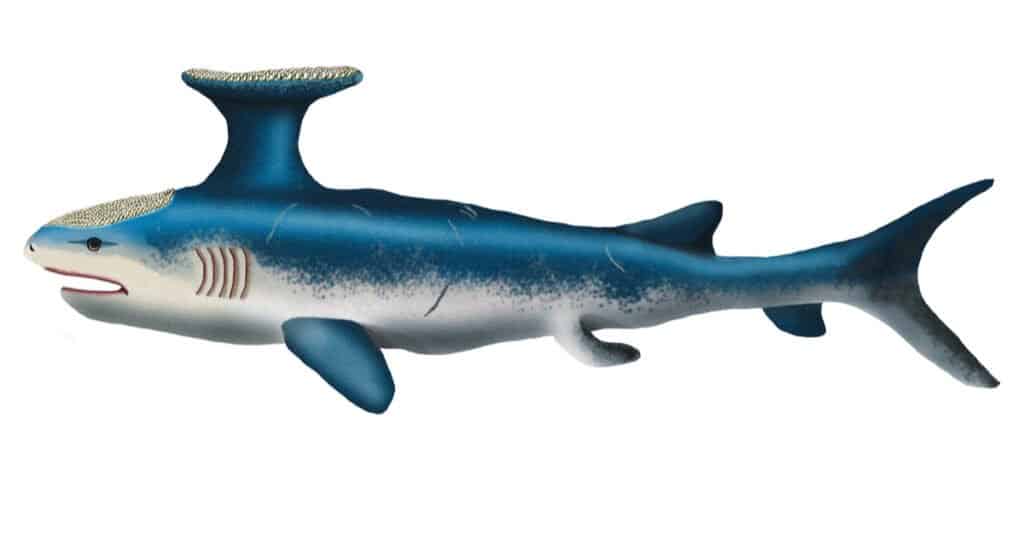
Zero Smany/Shutterstock.com
- Type of Shark: More closely related to chimaeras than sharks
- Wild Stethacanthus Shark Fact: Just look at the drawing of it above, it had an anvil on its head!
Stethacanthus died out around 300 million years ago, but it was certainly one of the most unique sharks to ever live. What was the purpose of its anvil? it is uncertain. It may have been used for mating, or to scare away predators. Regardless, this is one shark species that looked unique!
Pondicherry Shark
- Type of Shark: Ground sharks
- Wild Pondicherry Shark Fact: Pondicherries were thought to have been extinct since the 1970s before one was found in 2019.
Finally, we’ll conclude our look at the type of sharks with a look at Pondicherry sharks. Today, about 2.4% of sharks are considered critically endangered, 3.2% are endangered, and 10.3% are vulnerable. The population of many sharks have crashed in recent decades and they continue to face threats such as overfishing.
The Pondicherry shark was thought extinct for nearly four decades before one was recently found at a fish market. While sharks don’t face the same rate of extinction as other mammals, their population continues to drop. If measures aren’t taken to continue protecting species, other species beyond the Pondicherry may face the prospect of extinction.
Types of Sharks
FAQs (Frequently Asked Questions)
What unusual environments do sharks live in?
Sharks can be found across nearly every environment on Earth. In the Arctic, Greenland sharks have adapted to bitterly cold waters. In fact, sharks can even be found in volcanoes! Researchers in the Solomon Islands were recently studying an underwater volcano and found two kinds of sharks living in its caldera!
More from A-Z Animals
How many types of sharks are there in the world? In the article below we’ll examine into the types of sharks (hint: there are 8 main groups and each has significant differences). From there we’ll dive into 25 of the most unique shark species on Earth that show just how different (and interesting) sharks can be. Let’s dive in!
How Many Species of Sharks Are There?

Tomas Kotouc/Shutterstock.com
As of late 2021, there are 512 species of sharks, but that number is almost certain to grow. Why is that? Well, there are 23 species of sharks that are waiting on scientific description to be considered “valid.” That brings the likely total of discovered sharks to 535!
Here’s something mind-blowing, if you picked up a book about sharks published in the year 2000, it would list 405 species of sharks. That’s because 107 new shark species have been added since the turn of the century. It’s likely that in the years ahead entirely new sharks will continue being discovered!
Why are we still discovering shark species?
With sharks generally being very large, you might wonder how we’re still discovering so many sharks. After all, there was a 35-year gap that elapsed between the discovery of the last two carnivorous mammals!
There are a couple of reasons sharks keep getting discovered:
- This might sound simplistic, but sharks live in water and are just less commonly bumped into. One species of shark, the pondicherry was called the “lost shark” because it hadn’t been seen since the 1970s. However, one was quickly discovered by a TV crew looking for the species at a fish market.
- Many sharks are deep sea sharks: That is to say, they lived hundreds or even thousands of feet below the surface. Humans only make contact with these species on rare travels that deep or when they wash up on shore.
Now that we know how many shark species exist, let’s dig into what types of sharks exist.
Different Types of Sharks:

Blacktip Reef Shark
They move in and out of mangrove swamps with the tides.

Bonnethead Shark
Bonnetheads are the only hammerhead sharks that use their pectoral fins to swim.

Bull Shark
Unpredictable and aggressive temperament!

Caribbean Reef Shark
These sharks are a big part of ecotoursim in the Caribbean.

Cookiecutter Shark
The cookiecutter shark takes its name because it leaves a cookie-shaped bite hole in its prey.

Frilled Shark
Frilled Sharks got their name from the six rows of gills on their throat that look like ruffled collars.

Galapagos Shark
Galapagos sharks are cannibalistic and sometimes eat their young, so the pups stay away from the adults in shallow water.

Goblin Shark
Goblin Sharks are called a living fossil because their family, Mitsukurinidae, can be traced back 125 million years.

Great White Shark
Can grow to more than 8 meters long!

Greenland Shark
This shark has the longest lifespan of any vertebrate.

Grey Reef Shark
One of the most common shark species!

Hammerhead Shark
Found in coastal waters around the world!

Horn Shark
Endemic to the Californian coast!

Leopard Shark
Leopard Sharks have teeth with three points.

Megalodon
The largest shark to ever live!

Megamouth Shark
Swims with its mouth open to capture prey

Nurse Shark
Commonly found in Central American waters!

Porbeagle Shark
The porbeagle is one of the few sharks that jumps out of the water

Pygmy Shark
Pygmy sharks underbelly glows to attract prey that swims beneath it.

Reef Shark
Grey reef sharks can give birth without males

Salmon Shark
Salmon sharks are related to Great Whites.

Sand Tiger Shark
The sand tiger is the shark most commonly seen in aquariums.

Silky Shark
Has an extremely acute sense of hearing

Sixgill shark
The sixgill shark has six pairs of gills instead of the normal five

Sleeper Shark
The Greenland shark is one of the longest living vertebrates in the world.

Spinner Shark
Can have up to 20 babies

Spiny Dogfish
Found in ocean waters worldwide!

Tiger Shark
The fourth biggest species of shark in the world!

Viper shark (dogfish)
Most data on these fish is based on observations near Japan.

Whale Shark
The largest species of fish in the world!

Zebra Shark
Can get to be 30 years old in the wild!
What are the 8 Groups of Sharks (Orders)?

By Javontaevious – Took a photographPreviously published: Javontae [email protected] Facebook, CC BY-SA 3.0, https://en.wikipedia.org/w/index.php?curid=37516033 – License
Before we dive into 25 of the most unique shark species in the world, let’s examine the 8 different group of sharks. There are 8 orders that comprise all known sharks. Learn all 8 of these and you’ll be familiar with how scientists group different types of sharks!
1.Dogfish sharks

Dotted Yeti/Shutterstock.com
Include gulper, kite-fin, dogfish, lanternsharks, and sleeper sharks. Some notable species in the dogfish order include:
- Greenland sharks: Which can live up to 500 years.
- Cookiecutter sharks: Takes small bites out of their prey leaving unique scarring.
- Ninja lanternshark: A shark that glows in the dark.
In total there are 131 types of dogfish shark, making it one of the most diverse orders of sharks. In fact, 24% of all shark species belong to this order! It is likely more dogfish sharks will continue being discovered as well. Most lanternsharks live deep in the ocean. For example, the ninja lanternshark was just discovered in 2015!
2. Cow and frilled sharks

NOAA Ocean Explorer from USA – License
There are only seven species of cow and frilled sharks, making this the smallest order containing just 1% of total shark species. Cow and filled sharks include:
- Frilled shark: A “living fossil” with very primitive features.
- South African frilled shark: A newly discovered species that was just described in 2009.
- Bluntnose sixgill shark: Commonly known as the “cow shark.” One of the largest shark species, capable of growing to 20 feet in length!
3. Sawsharks

Morphart Creation/Shutterstock.com
Only slightly larger than cow and frilled sharks with a total of 8 species, sawsharks have snouts that look like… Well, saws! Sawsharks are different than sawfish. One notable difference is that few sawshark species don’t exceed more than 5 feet in length while the largest sawfish species can grow to 23 feet long!
Sawshark species include:
- Bahamas sawshark: A sawshark that lives in deeper waters that other species, reaching 1,000 meters below the ocean surface.
- Longnose sawshark: Its saw-like snout is 30% of its total body length!
4. Angel Sharks

LuisMiguelEstevez/Shutterstock.com
There are 22 species of angel sharks that occupy a single family and genus. Unfortunately, angel sharks are among the most endangered sharks in the world. They live along the bottom of the ocean close to coastlines, which means they’re often caught as a byproduct by fishing nets.
Some notable types of angel sharks:
- Angelshark: The first angel shark species described by scientists is simply known as ‘angel shark.” Unfortunately, this species is also now listed as critically endangered.
- Phillipines angelshark: Only a single specimen has been caught; was declared a new species in 2011.
5. Bullhead Sharks

Philip Garner/Shutterstock.com
Another smaller order of sharks with just 10 species (9 described). Bullhead sharks are very distinctive and can trace their lineage back to the Jurassic Era when gigantic dinosaur sauropods like Brontosaurus ruled the land! Bullhead shark species include:
- Horn shark: Common along the Pacfific Coast from California to South America. Horn sharks use suction to feed on a diet that mostly mullosks and crustaceans.
- Zebra bullhead shark: One of two sharks to start with a “Z.” If anyone ever asks you to name a shark that starts with “Z,” you’re now prepared!
6. Mackerel Sharks

Jsegalexplore/Shutterstock.com
The type of shark that includes Jaws himself! Mackerel sharks include great whites, thresher sharks, and sand sharks. Interestingly, while this order contains hunters like great whites, it also includes basking sharks which are filter-feeding giants that don’t hunt prey. In addition, this type of shark has some very odd-looking additions like the goblin shark.
Some mackerel sharks you need to know are:
- Great white shark: The largest predatory shark in the world, the great white is an apex predator in oceans across the world
- Shortfin mako: The world’s fastest shark! Recent tests showed the shark could burst up to 46 miles per hour.
- Goblin sharks: Some of the most unique looking sharks in the world (check out a picture later in this article!). The goblin shark is rarely sighted and has a long snout that looks like a sword!
- Salmon sharks: Can use their body as a heater to thrive in extremely cold waters.
7. Carpet Sharks

Lindsey Lu/Shutterstock.com
There are 45 different carpet sharks, and they range dramatically in size. This type of shark includes the whale shark, which is the largest fish in the world. Most carpet sharks are smaller and include nurse sharks, bamboo sharks, and wobbegongs.
Carpet sharks include:
- Whale shark: The largest shark species in the world and capable of reaching more than 60 feet in length!
- Epaulette shark: A species capable of walking on land when it gets stranded in tidal pools.
- Ornate wobbegong: Lives in Austrlian waters and has some of the most distinctive camoflage among shark species.
8. Ground Sharks

Martin Voeller/Shutterstock.com
The largest order of sharks with 296 species, ground sharks cover a tremendous diversity of species. In fact, 55% of all shark spies are ground sharks! For example, there are more than 140 species of catsharks (yes there are cat and dog sharks!) spread across this type of shark. Ground sharks also include hammerhead species, tiger sharks, and reef sharks.
- Tiger sharks: The second largest predator shark behind the great white, tiger sharks are voracious hunters that are known to eat just about any prey they can find!
- Atlantic ghost catshark: The third smallest shark species in the world, Atlantic ghost catsharks measure less than 10 inches in length.
- Bull sharks: A notoriously aggressive species of sharks that can live in both freshwater and saltwater.
25 Shark Species You Must Know!
Now that know the 8 types of sharks and which sharks belong in each, let’s dive into 25 of the most fascinating species of sharks. Each one has something incredibly unique, so you won’t want to miss reading about each one!
Great White Shark

Stefan Pircher/Shutterstock.com
- Type of Shark: Mackerel
- Wild Great White Shark Fact: The largest great white shark in the world is named Deep Blue and weighs about 5,000 pounds!
What other shark receives so much fascination as the great white? Great white sharks are the most aggressive sharks in the world, with 333 attacks on humans since tracking began in 1958. Yet, it’s important to remember that cows kill 20 people annually while great whites have killed four Americans in the past decade. The great white shark is an apex predator of the seas, rivaled only by the likes of killer whales.
Great Hammerhead

Brent Barnes/Shutterstock.com
- Type of Shark: Ground shark
- Wild Great Hammerhead Shark Fact: Great hammerheads spend 90% of their time swimming sideways!
There are 9 hammerhead sharks in the genus Sphyrna, but the great hammerhead is the largest. The unique shape of hammerheads is called a ‘cephalofoil,’ and it gives them 360-degree vision and superior depth perception. It can also be used as a weapon. Hammerheads will use their heads as a hammering ram to pin stingrays – among their favorite foods to eat – into the ground.
Tiger Sharks

Tomas Kotouc/Shutterstock.com
- Type of Shark: Ground shark
- Wild Tiger Shark Fact: Tiger sharks are very food motivated. Scientists tracking shark movement noticed while all other sharks fled a hurricane in 2017, tiger sharks moved into the hurricane hoping for easy meals!
If it weren’t for great whites, tiger sharks would likely fill in for ‘Jaws.‘ The species is quite large with the biggest tiger sharks weighing up to 1,700 pounds. In addition, they’re the second most aggressive sharks after the great white. Tiger sharks eat just about anything. Analysis of their stomachs has found humpback whales, dolphins, sea turtles, and even antelopes.
Spinner Shark

- Type of Shark: Ground shark
- Wild Spinner Shark Fact: Spinner sharks can rotate up to three times after jumping out of the water. They’re the gynmnists of the shark world!
Spinner sharks are most notable for their jumping behavior. The spinner shark hunts by spinning around rapidly. While spinning, it blasts through groups of fish and snap their jaws in all directions. After blasting through groups of fishes it hits the surface of the air, where it performs a series of spins that would make even world-class gymnasts green with envy!
Bluntnose Sixgill Shark

NOAA Ocean Explorer from USA – License
- Type of Shark: Cow and frilled sharks
- Wild Bluntnose Shark Fact: Can reach up to 20 feet long, about the same length as a great white shark!
Sixgill sharks are among the most prehistoric sharks in the world. Scientists trace their lineage back more than 200 million years! Bluntnose sixgill sharks are often called “cow sharks” because of their sluggish movements and large size. However, they can be quite quick and aggressive when threatened. For example, when the documentary Planet Earth 2 found a group of bluntnose sixgills feeding on a whale carcass, the group of sharks attacked the filming submarine believing it was competition for the whale feast.
Megamouth Shark

Opencage / Creative Commons – License
- Type of Shark: Mackerel sharks
- Wild Megamouth Shark Fact: Megamouth sharks are massive – and distinctive looking – but the first one was seen in 1976. Its almost beyond belief that a creature this size could still be unknown, but many deep water animals remain unknown to human kind.
Megamouth sharks are deep-sea sharks that are rarely spotted. They’re 13 feet long and possess something you might not associate with sharks: glowing pores around their mouths! Scientists believe these pores attract krill and other small organisms that megamouth sharks eat through filter feeding. Amazingly, this unique shark belongs to the same type of shark as great whites!
Porbeagle Shark

- Type of Shark: Mackerel sharks
- Wild Porbeagle Shark Fact: Porbeagle sharks can turn their bodies into heaters!
Porbeagle sharks live in the frigid waters of the North Atlantic and the Antarctic. As you can imagine, water this cold requires unique adaptations from a shark. In the case of the porbeagle, they can heat their bodies to 14 to 18 degrees Fahrenheit above the surrounding water!
Bonnethead Shark

IrinaK/Shutterstock.com
- Type of Shark: Ground sharks
- Wild Bonnethead Shark Fact: Bonnethead sharks were the first-ever shark scientists comfirmed as omnivores!
In 2018 scientific research found that 60% of the bonnethead shark’s diet was seagrass. That makes the bonnethead shark the first (known) omnivorous shark that eats a diet equal in plants and meats. Bonnethead sharks are also the smallest species of hammerheads.
Greenland Shark

Dotted Yeti/Shutterstock.com
- Type of shark: Dogfish shark
- Wild Greenland Shark Fact: Greenland sharks are the oldest living vertebrates on Earth! They can potentially live up to 500 years!
Greenland sharks belong to a family known as ‘sleeper sharks‘ that are known for having low activity and being extremely slow. Not very exciting, right? Well, Greenland sharks are also notable for getting very big. They can reach 24 feet in length, a size greater than the longest great white shark. Also, Greenland sharks might live more than 500 years! Scientists studying Greenland sharks found that one shark was between 272 and 512 years old. Greenland shark meat is also toxic but is eaten in Iceland. To eat it, the shark meat must be buried in the ground for long periods. Finally, Greenland sharks eat just about anything. Even moose have been found in their stomachs.
So there you have it, sleeper sharks like the Greenland shark might sound boring, but that is one interesting shark!
Blue Shark

Martin Prochazkacz/Shutterstock.com
- Type of Shark: Ground shark
- Wild Blue Shark Fact: Female blue shark skin is twice as thick as males so they have survive bites during mating.
Requiem sharks are a large family of sharks that are effective hunters. This family includes tiger sharks, reef sharks, bull sharks, and yes, the blue shark. Requiem sharks are notable for giving live birth and being migratory. Blue sharks reach up to 10 feet in length and have a torpedo-like body that helps them reach impressive bursts of speed.
Horn Shark

- Typoe of Shark: Bullhead shark
- Wild Horn Shark Fact: Horn sharks can pop out their jaws to use as a chisel on molusks attached to surfaces!
Horn sharks are one of the few species inside the bullhead shark order. The species can protrude its jaw 15% the length of its head in 1/50th of a second, this action allows it to carve off prey that’s attached to surfaces. This adaptation has served horn sharks well, as they can trace their lineage to the Jurassic Period when dinosaurs dominated the planet. This makes bullhead sharks some of the most prehistoric sharks still alive today.
Nurse Shark

Maui Topical Images/Shutterstock.com
- Type of Shark: Carpet sharks
- Wild Nurse Shark Fact: Nurse sharks are the vacuum cleaners of the sea
Nurse sharks lay along the ocean floor near beaches. They’re mostly harmless to humans but can get quite big (more than 10 feet in length)! Nurse sharks eat in an interesting way, they have “barbels” on their faces that are similar to catfish that are used to smell for food. They then swim – or even walk by using their fins – along the ocean floor and “vacuum” up prey into their mouths. The species has a special cavity in their mouths that allows for incredible suction. Once prey enters their mouth their teeth are specialized to crush up shells of mollusks and crustaceans. As we said, they’re the vacuum cleaners of the sea!
Basking Shark

Chris Gotschalk / Public Domain
- Types of Shark: Mackeral sharks
- Wild Basking Shark Fact: They can reach up to 32,000 pounds in weight!
Basking sharks are gigantic, the second largest species of shark (we’ll get to number one shortly). While their average length is closer to 26 feet when fully grown, the largest ever basking shark reached 40 feet long and had an estimated weight of 32,000 pounds. That’s one big fish! If you see a picture of a basking shark and think they look scarier than they are in reality (they’re harmless to humans and filter feeders), the basking shark is a mackerel shark and closely related to great whites, which helps explain their appearance.
Cookiecutter Shark

- Type of Shark: Dogfish shark
- Wild Cookiecutter Shark Fact: They’re parasitic sharks that carve out cookie dough shaped bites from animals they prey on. Yeah, this is one weird shark species!
We’re about to get into some downright weird shark species, so it’s fitting we start with the cookiecutter shark. Never heard of them before? Cookiecutter sharks spend their days up to two miles deep in the ocean and migrate to the surface at night. They’re small, measuring less than two feet in length.
Now, here’s where they get so weird. Cookiecutter sharks look for prey and use suction to attach to them. Once they’ve attached themselves, they bite in with teeth that measure two to three inches in length and pop out a chunk of meat that looks like a scoop of cookie dough! Their teeth are powerful as well, cookiecutter sharks have forced nuclear submarines back to base after they disabled cables and sonar domes with their bites!
There are plenty of other weird aspects of this shark from their appearance to the fact they glow for hours after they die. Yet, it’s their cookie dough-shaped bite that stands out the most!
Goblin Shark

Mitsukurina owstoni
Japan (specimen / digitally manipulated)
David Shen / SeaPics.com
- Type of Shark: Mackerel sharks
- Wild Goblin Shark Fact: Their jaws shoot out of their mouth like the creature in Alien
With a name like goblin sharks, you know we’re sticking with a weird species. First of all, just look at goblin sharks, they have a sword-like object sticking out of their heads. Goblin sharks look so unique because they’re the only surviving species of an ancient type of shark. Goblin sharks are very large with a recent female catch having reached close to 20 feet in length.
Little is known about the species as they live in the deep ocean, but their jaws are one of their most incredible adaptations. Essentially, its jaws rapidly extend forward like a catapult, extending out from its body 2X to 10X further than other shark species. Even you’re trying to visualize what this looks like, think about the creature from Alien.
Bull Shark

Katja Tsvetkova/Shutterstock.com
- Type of Shark: Ground shark
- Wild Bull Shark Fact: Bullsharks can swim upstream across rapids – like salmon – to be able to reach freshwater lakes!
Bull sharks are aggressive sharks that will go literally anywhere for food. Such as:
- Bull sharks commonly live in a lake in Nicaragua that they have to jump up rapids (like salmon fighting a river to spawn) to get to.
- They’ve been seen 2,500 miles up upriver looking for food!
- In 2010, after the city of Brisbane was flooded they were spotted through city streets.
Bull sharks have an adaptation that allows them to live in both freshwater and saltwater, and as you can see from the examples above; they take advantage of it! They’re also extremely aggressive sharks and have even been spotted squaring off against hippos!
Whale Shark

Richard Whitcombe/Shutterstock.com
- Type of Shark: Carpet shark
- Wild Whale Shark Fact: Whale sharks are big, you probably know that. But here’s just how big they are, their eggs are twice the size of ostrich eggs!
The largest-ever whale shark measured 62 feet long, it was the size of a bowling alley! Because they’re so enormous, whale sharks also take a long time to reach sexual maturity. Males area about 25 years old before they’re able to reproduce, and may live to 130 years of age! Despite their massive size, whale sharks are harmless to humans. They filter feed and have more than 3,000 teeth that crush up krill, eggs, and larvae.
Frilled Shark

- Type of Shark: Cow and frilled sharks
- Wild Frill Shark Fact: Here’s how rare frilled sharks are, the first video of one wasn’t recorded until 2004!
Frilled sharks are another “living fossil” species of sharks that looks more like an eel than most modern sharks. Like cookiecutter sharks, they migrate to the ocean surface to hunt at night and spend their days deep below the ocean’s surface. One interesting fact about the frilled shark is that their gestation period may be up to 3.5 years long, or more than four times the length of a human!
Sand Tiger Shark

Alessandro De Maddalena/Shutterstock.com
- Type of Shark: Mackerel sharks
- Wild Sand Tiger Shark Fact: Can gulp air from the surface which allows them to “ambush” prey in environments like shipwrecks!
Here’s what’s interesting about sand tiger sharks, they can hunt unlike other sharks. For most species of sharks, they need to move to breath. That is to say, if they stop swimming they perish! Sand tiger sharks have an adaptation that allows them to gulp air at the surface, which allows them to lay motionless. This makes sand tiger sharks especially effective hunters in habitats like shipwrecks since they can lay motionless in wait and leap at prey when they pass by!
Thresher Sharks

- Type of Shark: Mackerel sharks
- Wild Thresher Shark Fact: A tail as long as their body that they use to whip prey!
Thresher sharks have one defining feature: a tail that’s the same size as their body! They use this tail to “whip” at prey, shocking them and providing an easy meal. It was recently discovered that thresher sharks migrate to spots where millions of fish congregate off reefs. With huge “bait balls” of fish, the thresher shark’s whip is especially effective!
Shortfin Mako Shark

wildestanimal/Shutterstock.com
- Type of Shark: Mackerel sharks
- Wild Shortfin Mako Shark Fact: Their bullet-shaped body allow them to travel up to 46 miles per hour
Shortfin makos are built for one thing: speed! The sharks aren’t small, they can reach more than 14 feet in length and the largest shortfin mako ever recorded weighed 1,300 pounds! Shortfin makos have been recorded hitting speeds of up to 46 miles-per-hour, which makes them the fastest shark species in the world. In addition to being built for speed, they’re also an extremely intelligent species with a large brain-to-body ratio.
Epaulette Shark

slowmotiongli/Shutterstock.com
- Type of Shark: Carpet sharks
- Wild Epaulette Shark Fact: They can walk on land!
The most crazy thing about epaulette sharks is pretty simple, they can walk on land! The species isn’t especially large, reaching a bit less than four feet in length at maturity. Epaulette sharks prefer hunting near land in tidal pools, which leads to them often being stranded. To avoid death when the tide moves out too quickly epaulettes have developed a unique adaptation that allows them to slow their breath and heart rate and survive for up to an hour while they walk back to the water! Yes, this truly is a shark that can walk (briefly) on land.
Types of Sharks that Have Gone Extinct
Sharks first evolved around 450 million years ago and have survived several mass extinctions that brought down other dominant types of animals.
(Interesting fact, about 19 million years ago sharks almost went the way of the dinosaurs. 90% of them rapidly died off and scientists aren’t exactly sure why!)
No look at the types of sharks in the world would be complete without an examination into types of sharks that have gone extinct. Let’s take a look at three species you want to get the full details on!
Megalodon

Gil Cohiba/Shutterstock.com
- Type of Shark: Ancestor to mackerel sharks
- Wild Megalodon Shark Fact: Its bite force was estimated to be five times more powerful than a Tyrannosaurus Rex!
Let’s face it, no list looking at types of sharks would be complete with megalodon! The shark was big, with some estimates of its size reaching between 20 times to 50 times the size of the largest great white in the world today when measured by weight! The absence of megalodon is likely the reason that whale species today – like the blue whale – have evolved to become so large. Simply put, megalodon was the apex predator of the oceans for around 20 million years and its absence still hasn’t been replaced!
Stethacanthus

Zero Smany/Shutterstock.com
- Type of Shark: More closely related to chimaeras than sharks
- Wild Stethacanthus Shark Fact: Just look at the drawing of it above, it had an anvil on its head!
Stethacanthus died out around 300 million years ago, but it was certainly one of the most unique sharks to ever live. What was the purpose of its anvil? it is uncertain. It may have been used for mating, or to scare away predators. Regardless, this is one shark species that looked unique!
Pondicherry Shark
- Type of Shark: Ground sharks
- Wild Pondicherry Shark Fact: Pondicherries were thought to have been extinct since the 1970s before one was found in 2019.
Finally, we’ll conclude our look at the type of sharks with a look at Pondicherry sharks. Today, about 2.4% of sharks are considered critically endangered, 3.2% are endangered, and 10.3% are vulnerable. The population of many sharks have crashed in recent decades and they continue to face threats such as overfishing.
The Pondicherry shark was thought extinct for nearly four decades before one was recently found at a fish market. While sharks don’t face the same rate of extinction as other mammals, their population continues to drop. If measures aren’t taken to continue protecting species, other species beyond the Pondicherry may face the prospect of extinction.

